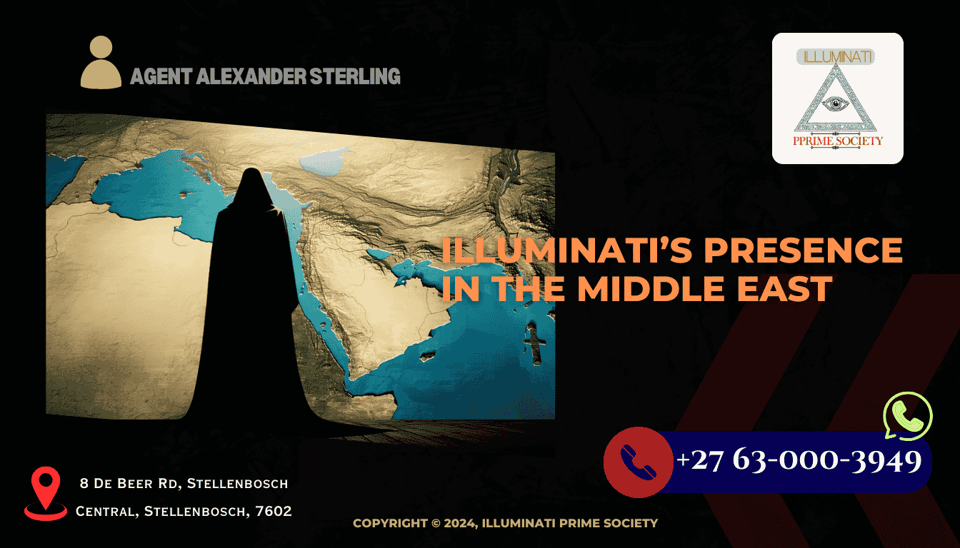Unveiling the mysterious ways in which the Illuminati allegedly extends its reach across the globe....
Exploring the Illuminati's Influence in the Middle East

Unravel the mysteries behind the enigmatic presence of the Illuminati in the Middle East.
To guide you deeper into the Illuminati ecosystem, talk to us:
-
“Ready to share your success story?” → Contact Form
-
“Learn directly from Agent Alexander Sterling” → Agent’s Blog
-
“Speak privately about your path” → Talk to Agent on WhatsApp ✅
- “Explore more member journeys” → /illuminati-member-testimonials
- "Global Chapters and Expansion " → /global-chapters-expansion
The Historical Roots of the Illuminati
The origins of the Illuminati can be traced back to the 18th century in Bavaria. Initially, it was founded as a secret society aimed at promoting Enlightenment ideals and opposing religious and political oppression. Over the centuries, the Illuminati have been linked to various global events and alleged to have a hand in shaping world affairs.
In the Middle East, the historical roots of the Illuminati are less clear, but some theorists suggest that their influence can be seen in various ancient societies and secretive groups that have operated in the region. These historical connections form the foundation for the contemporary theories about the Illuminati's presence in the Middle East.
Alleged Illuminati Influence on Middle Eastern Politics
The Middle East has long been a focal point of geopolitical interest, and some conspiracy theorists argue that the Illuminati play a significant role in shaping the region's political landscape. These theories often point to the involvement of influential figures and secretive meetings that allegedly steer political decisions.
One of the common claims is that the Illuminati manipulate political leaders and governments to serve their broader agenda. Critics, however, argue that such theories lack concrete evidence and often serve to oversimplify the complex political dynamics of the region.
Cultural and Social Impacts of the Illuminati in the Middle East
The cultural and social impacts of the Illuminati in the Middle East are a subject of much debate. Some believe that the Illuminati's influence extends to cultural institutions, media, and education, subtly shaping public opinion and societal norms.
These theories suggest that the Illuminati promote certain ideologies and values that align with their goals, thereby influencing cultural development. Skeptics argue that these claims are often based on anecdotal evidence and lack substantiation.
Illuminati Symbols and Their Presence in Middle Eastern Architecture
Symbols associated with the Illuminati, such as the all-seeing eye and the pyramid, are claimed to be present in various architectural structures across the Middle East. Some theorists suggest that these symbols are a sign of the Illuminati's hidden influence and control over significant cultural and historical landmarks.
To guide you deeper into the Illuminati ecosystem, talk to us:
-
“Ready to share your success story?” → Contact Form
-
“Learn directly from Agent Alexander Sterling” → Agent’s Blog
-
“Speak privately about your path” → Talk to Agent on WhatsApp ✅
- “Explore more member journeys” → /illuminati-member-testimonials
- "Global Chapters and Expansion " → /global-chapters-expansion
While some buildings do feature these symbols, it is essential to consider the broader context of architectural design and cultural symbolism. Many of these symbols have multiple interpretations and historical significances that are not necessarily linked to the Illuminati.
Debunking Myths: Separating Fact from Fiction
Many myths surround the presence of the Illuminati in the Middle East, and it is crucial to separate fact from fiction. While the idea of a secret society manipulating global events is intriguing, it is often difficult to find concrete evidence supporting these theories.
Scholars and experts emphasize the importance of critical thinking and skepticism when evaluating such claims. It is essential to rely on verified information and to consider multiple perspectives to gain a holistic understanding of the subject.
.png?width=100&height=100&name=Illuminati%20Prime%20Society%20Logo%20(1).png)


